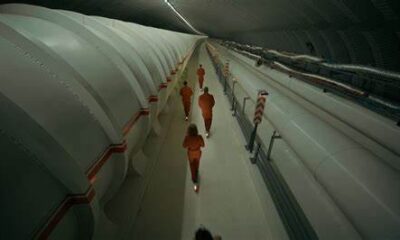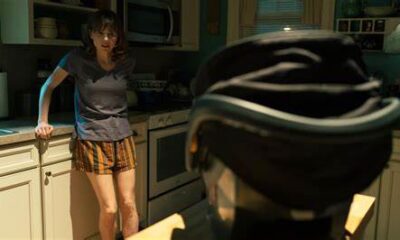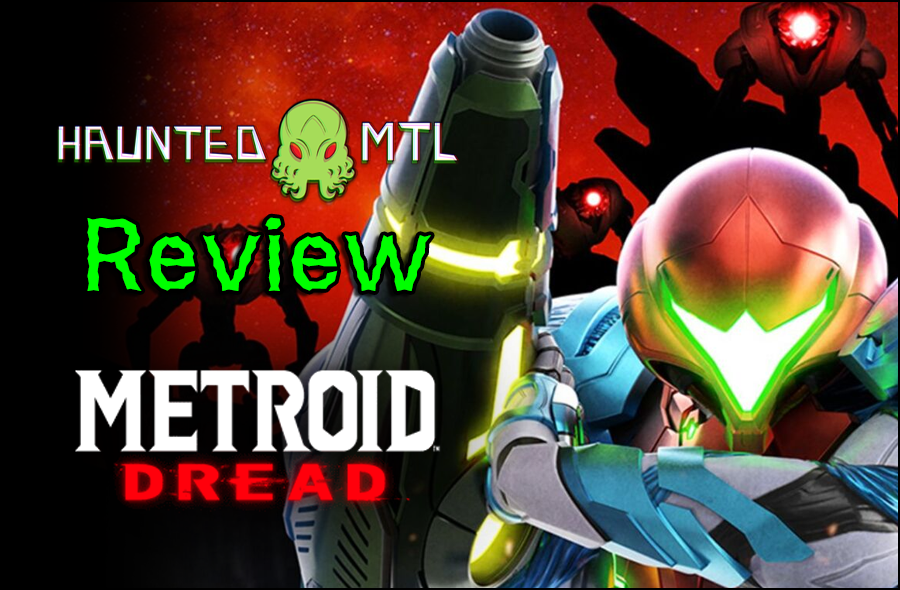
Review: Metroid Dread (Switch – 2021)
Metroid Dread lands on the Nintendo Switch after nearly 19 years of speculation about the next chapter of the series. At first blush, the Metroid franchise may not seem like a horror game, but the series is rooted in strange, isolated areas and lurking danger. it is the most horror-driven series in Nintendo’s holdings outside of Eternal Darkness: Sanity’s Requiem and the chances of a new installment or even re-release of that game are about as thin as the atmospheres of the worlds Samus Aran explores in the Metroid series.
But what about Metroid Dread? Horror-discussion aside, how is the game? Is this a game that was worth waiting nearly two decades for?
What is Metroid Dread?
Metroid Dread is the sixth entry in the classic Metroid franchise. The series spun off in the Gamecube era with Metroid Prime – a first-person series. The classic Metroid style of gameplay is an action survival series where players control the lone, armor-clad Samus Aran as she runs missions for the Galactic Federation and often tangles with dangerous parasitic aliens – initially the Metroids, but later the X parasites. The games are 2D with Samus utilizing a variety of powerful abilities and weapons to fend off hostile environments, technology, and aliens.
Metroid Dread does not stray far from the formula, which is probably for the best as it is a formula that people still very much crave. The Metroidvania genre, a portmanteau of Metroid and Castlevania, is still quite alive and well, with many independent games of the genre, like Hollow Knight, finding critical and commercial success.
Metroid Dead takes the initially expected gameplay of the series but adds in the wrinkle of more survival-oriented sections where Samus can do little against a nearly invincible enemy. This creates a new flow of gameplay and results in extremely tense moments of gameplay.
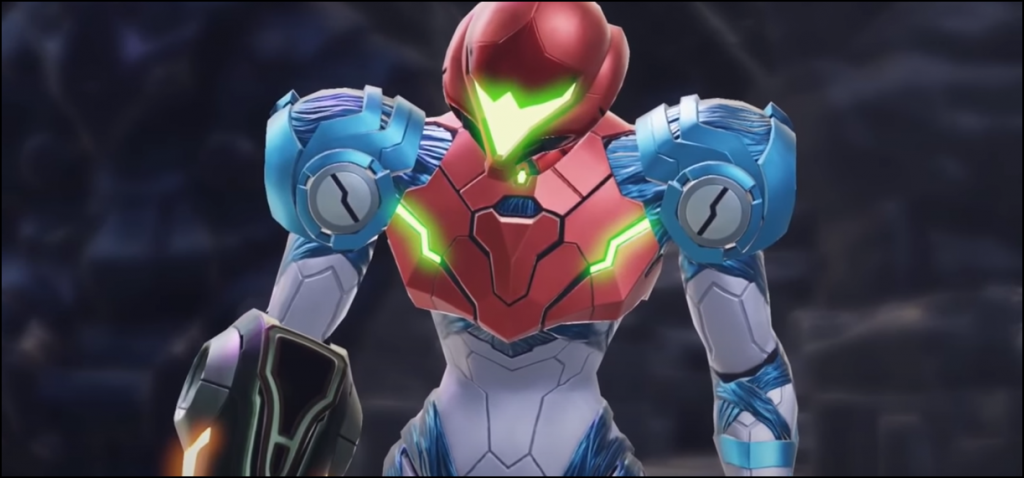
What Works With Metroid Dread
The shift in gameplay in Metroid Dread is interesting. Moments of exploration and puzzle-solving utilizing Samus’ vast array of abilities tied to her suit are generally the most relaxing aspects of the game. Exploring and back-tracking as the mercy of Samus’ abilities as they are recovered creates a number of environmental puzzles. It is especially fun when you make note of areas you explore to come back to later when you recognize you need a specific ability. The shift, however, comes from the E.M.M.I. zones.
The E.M.M.I. are the most significant figures in the game’s branding outside of Samus Aran, and for good reason, as you see them a lot. Perhaps, more to the point, you hear them a lot. The game creates moments where exploration gives way to stealth in E.M.M.I.-specific chambers where Samus must utilize stealth and acrobatics to avoid a nearly invulnerable enemy. These robots will hunt Samus down at high speed with unnerving movements and make loud, bat-like echolocation chirps. It gets bad enough that even the sound of an E.M.M.I. somewhere in the zone is enough to unnerve you. Raising the tension, these robots are relentless and will result in an instant game over 99% of the time, as the parry window when caught is unnervingly limited. It is a fascinating role reversal in a series where Samus is the defacto badass and warrior and flips the series on its head.
It helps that the controls and genuinely tight for both styles of gameplay. Samus has never controlled better with incredibly cool abilities that showcase her agility, but also capable of illustrating her sheer power. The relatively new parry-system, an upgrade from Samus Returns, works wonderfully here and can be done on the move. If you want to play an aggressive Samus you totally can, and it works. But just as fun can be the defensive and evasive Samus who can use stealth, the morph-ball, and sliding to get around zones while being chased.
The game’s atmosphere and presentation are also the best in the series so far. The attention to detail to Samus’s motion, even on a 2D plane are impressive. When going into aiming mode you can make out her pose changes by the context of the environment and obstacles, such as holding onto walls to steady herself as she aims. The game is also gorgeous. While the Switch is not a powerhouse system, Nintendo’s focus on art design makes up for the technical lack, especially character and creature designs. This may be the coolest Samus has ever looked.
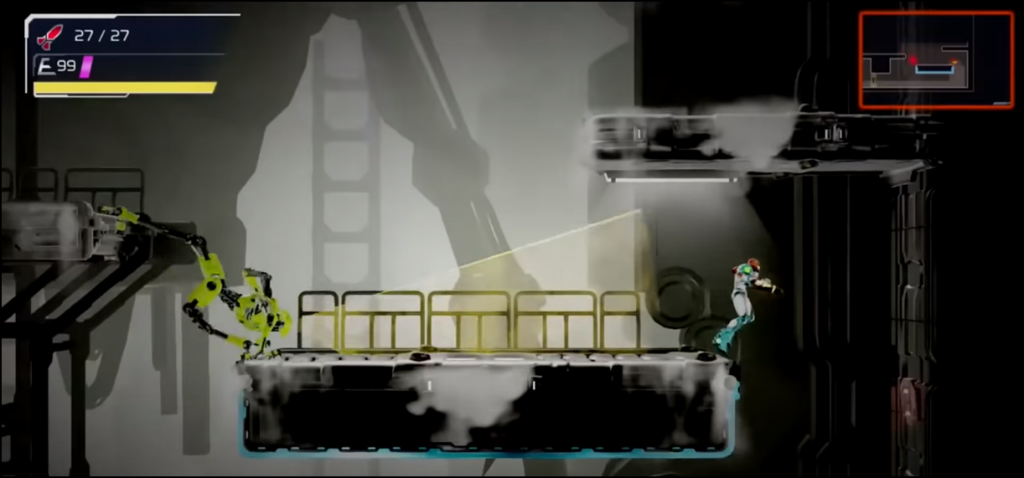
What Didn’t Work With Metroid Dread
With the increased functionality afforded to a seemingly more agile Samus Aran, the controls can be confusing in an E.M.M.I. encounter. Between sliding, the morph-ball, and shinesparking you may find yourself inevitably mixing up buttons or triggering the wrong action. Not that it is the fault of the game, per se, but the abundance of options in a high-intensity scenario like an E.M.M.I. chase can prove overwhelming at times, and may be overly punishing given the low chance of an escape once caught. Mercifully, the game helps reduce the frustration by returning Samus just outside of the zone upon a game over, whereas elsewhere returning her to the last save room on a game over. It is a reasonable accommodation for sequences that essentially strip Samus of her power.
One of the more annoying hallmarks of the series continues in Metroid Dread with the destructible walls. While many can be identified by paying close attention to the environment, there are others where the clues are so subtle that you may not be able to detect them without firing missiles all over the place. This is rare, but it still happens. Something things never change. Another issue is somewhat punishing bosses which often feel repetitive within their own fights with not as much variation and differing phases in each encounter. You’ll find yourself pelting a boss with so many missiles you may be asking yourself “how is this thing still not dead?”
Unfortunately, the music doesn’t live up to the heights of previous titles. While many tunes in Metroid are minimal, fitting the alien environments, there are still some fantastic melodies present. it feels less like the case here. The most iconic tunes still seem to be series staples carried through the series. Nothing that lives to the height of Ganadrayda’s Theme in Metroid Prime 3: Corruption or the classic Brinstar theme.
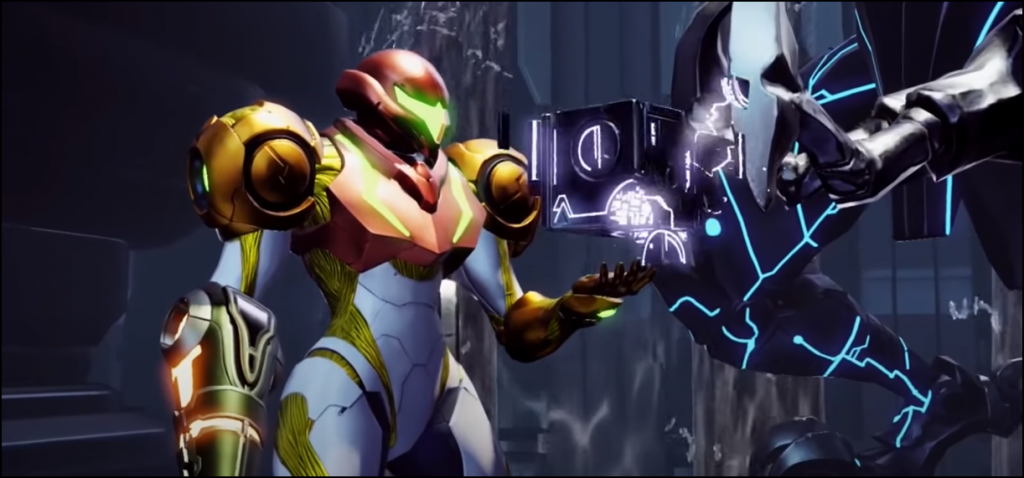
Bottom Line
An anticipated return to a series that hardcore fans have clamored for close to 20 years that lives up to the hype. This is definitely an evolution in presentation and atmosphere, but it still retains enough classic gameplay that will appeal to fans and more hardcore gamers. Casual players may find themselves a little more challenged compared to most games these days, but that probably makes the rewards all the better.
Now, hopefully, we won’t have to wait another decade or two for a follow-up. At least we know Metroid Prime 4 is on the way. If you have a Switch, get Metroid Dread and play it a couple of times and really take in the love and attention to the franchise developer MercurySteam put into it.
Metroid Dread was developed by MercurySteam and published by Nintendo. You can purchase Metroid Dread wherever video games are sold (note we are an Amazon affiliate, so we may earn money if you purchase through that link) or via the Nintendo eShop.
 (5 / 5)
(5 / 5)
Have you had a chance to dive beneath the surface of planet ZDR? What do you think about the latest chapter in the Metroid series? Let us know in the comments.
Gaming
Lovecraft Meets Junji Ito in WORLD OF HORROR
WORLD OF HORROR is a cosmic horror roguelite game developed by Paweł Koźmiński and published by Ysbryd Games.
WORLD OF HORROR is a cosmic horror roguelite game developed by Paweł Koźmiński and published by Ysbryd Games. The game is available on macOS, Windows, Nintendo Switch, PlayStation 4, and PlayStation 5. This review will cover the Steam (Windows) version of the game.
You must explore the strange goings on around Shiokawa, Japan. It appears that eldritch forces have influenced the town in incomprehensible ways. So, attempt to comprehend these forces and maintain your sanity to save the town. Plan your investigations, choose between cases, and fight for your life.
There are a few game modes but three difficulty spikes. The easiest is a specific case with some random events. This mode teaches you the basic mechanics of the game. The harder difficulties give you access to an apartment and choices on which case you investigate. Completing objectives earns you customization options for the customized mode.

What I Like About WORLD OF HORROR
Running on GameMaker Studios, the pixelated aesthetic shows influences from Lovecraft and Junji Ito, though the latter more so than the former. WORLD OF HORROR haunts its viewers with its aesthetic, allowing the pixels to evoke those horror legends.
Random generation remains a key feature of the game, with various options and choices giving a massive variety. Your character also has some limited customization to access perks and further development. I will bring up some weaknesses later, but it is surprisingly vast. Adding to this variety, WORLD OF HORROR provides mod accessibility.
The combat allows for a great deal of thought and planning. You select your character’s actions within an action bar and perform the tasks (or combos) to beat an opponent. This JRPG style provides variety in action that makes it engaging and unique.
The random generation and variety make each playthrough different. You might acquire a devastating katana in one playthrough only to bleed out unceremoniously in another.
While not a terrifying gaming experience, WORLD OF HORROR strives to provide an eerie and intense experience. At this, the game is a success. The weird and unnerving collide to invest the player in this strange world.
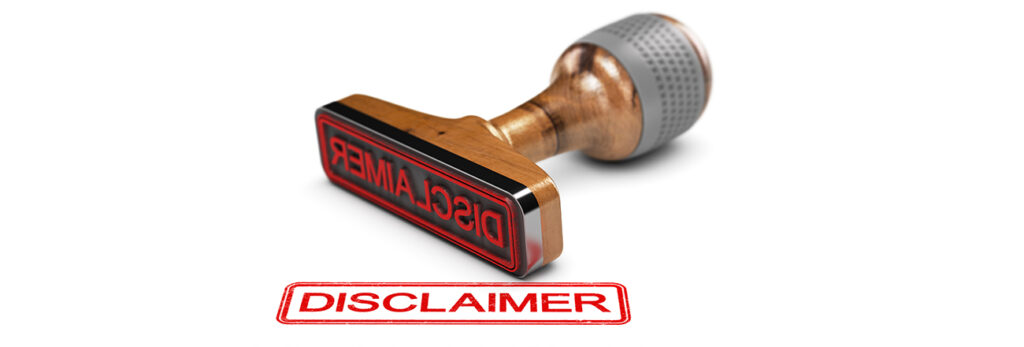
Tired Tropes and Triggers
Body horror deserves a mention, but the aesthetic and pixels doesn’t particularly evoke realism. Regardless, many designs evoke body horror.
Aside from this, here are some points of consideration. First, WORLD OF HORROR uses JRPG turn-based combat, which seems a point of division among some gamers. However, there are enough interesting mechanics and complexities beyond clicking an action and waiting your turn.
Second, WORLD OF HORROR isn’t a cult detective. You’re experiencing events and choosing how your character responds. Some sage wisdom I heard for WORLD OF HORROR is to focus on the whole campaign instead of a single case. Failing a case isn’t a game over, so prioritize your character’s longevity.
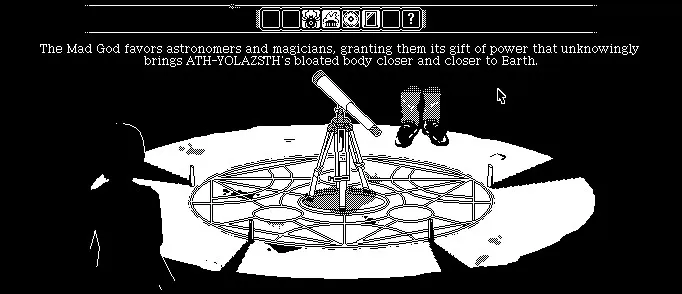
What I Dislike About WORLD OF HORROR
Only a few issues hindered my experience. Some scenarios replay on a single case, let alone a playthrough, which becomes repetitive. Some scenarios have multiple solutions to add variety or require perks to access new options, but that’s not always true. This issue makes the randomization taxing at times.
This next issue is likely a bug or an oversight. After losing my reason (sanity), I found myself still able to investigate despite the game claiming that means death. An unrelated event finished me off, but I can’t help but assume this is a bug.

Final Thoughts
WORLD OF HORROR has its quirks but earns massive replay value and surprising depth. It’s a unique and ambitious indie title worth the price. If Junji Ito’s style or cosmic horror is your particular brand of horror, WORLD OF HORROR delivers an experience you’ll likely enjoy. Though this combination synergizes well, few games combine these elements successfully.
Gaming
🎮 Eldritch Automata: Exclusive GenCon 2024 Reveal with Nick Francia!
Step into the mind-bending world of Eldritch Automata as we sit down with Game Designer Nick Francia at GenCon 2024!
Uncover the secrets behind this Lovecraftian mecha-masterpiece and get a glimpse of what’s to come.
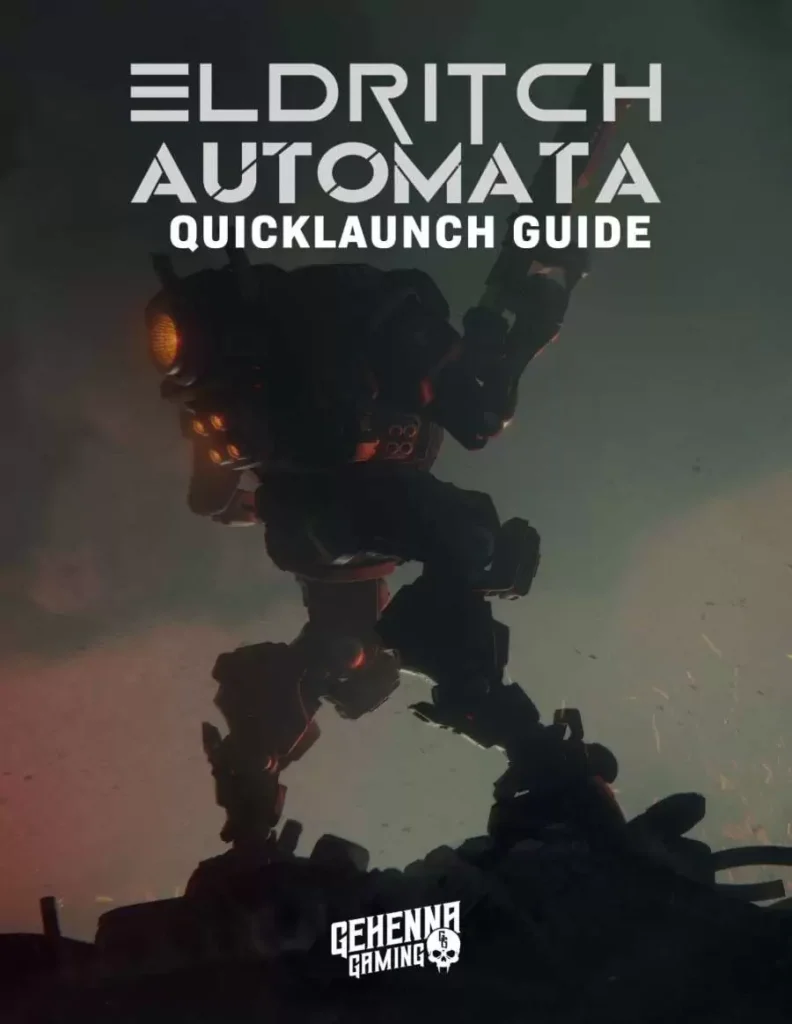
In this exclusive interview, Nick Francia shares:
• The intricate game development process • Inspirations behind the eerie Lovecraftian elements
• Unique mecha-infused gameplay mechanics Calling all Lovecraft fans! Dive into a world where eldritch horrors meet steam-powered marvels.
Eldritch Automata promises an unforgettable gaming experience that will keep you on the edge of your seat.
👉 Ready to embrace the madness? Check out our playable demo at a con near you! #EldritchAutomata #GenCon2024 #LovecraftianGaming #IndieGameDev
Gaming
🎬🎃 House of 1000 Corpses and Halloween II–GAMES!! 🎃🎬 Trick or Treat Studios
Prepare for a spine-chilling experience as Jim Phoenix delves into the shadows with Trick or Treat Studios at GenCon 2024!
In this exclusive interview, we uncover the terrifying secrets behind their latest bone-chilling creations: “House of 1000 Corpses” and “Halloween II” board games.
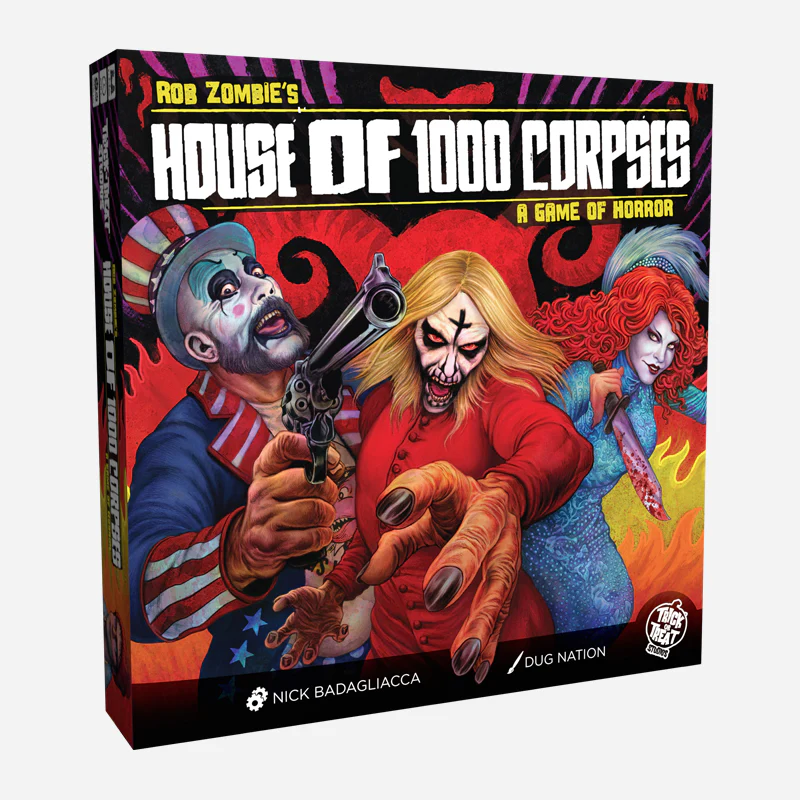
These games aren’t just about rolling dice – they’re about immersing yourself in the blood-curdling atmosphere of beloved horror films. With unique survival (and kill!) horror mechanics and cooperative gameplay, you’ll feel the terror coursing through your veins with every move!
But wait, there’s more! With the Kickstarter to House of 1000 Corpses shipping soon, we have an in-depth review coming up for that game, Halloween II–AND…Chucky. BOOMMM!!!


